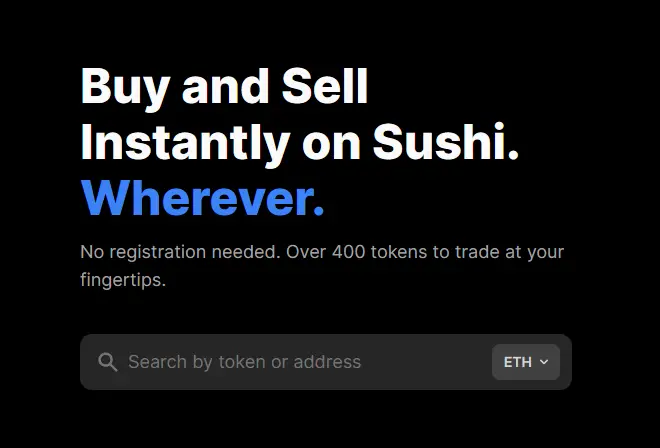Best way to explain WHAT IS SUSHISWAP PROTOCOL? A REVIEW OF UNISWAP CLONE
SushiSwap is an automated market-making (AMM) decentralized exchange (DEX) running on the Ethereum blockchain. SushiSwap is a fork of Uniswap with some key differences, most notably the SUSHI token.

Like other decentralized exchanges (DEXes), SushiSwap facilitates the buying and selling of different crypto assets between investors world wild. But it does so by using automated market-making (AMM) instead of the orderbook model.
Investor can add their tokens sitting idle in wallets into the liquidity pools and earn passive income According to their contribution. Traders can swap tokens from these liquidity pools. SushiSwap pools are AMMs that use constant x*y=k product algorithms to ensure that the amounts of tokens in pools are always balanced. but let dive in for better understanding.
HOW DOES SUSHISWAP WORK?
Swapping on SushiSwap works similarly to other AMM DEXes. Traders can swap any ERC20 tokens. When users make trades on the SushiSwap Exchange, a 0.3% fee is charged. 0.25% of that trade goes back to the LP pool.
In exchange for maintaining liquidity in these pools, liquidity providers are rewarded with protocol fees, along with a portion of newly minted SUSHI daily. They also SLP tokens (Sushiswap Liquidity Provider tokens) that represent a proportional share of the pooled assets, allowing a user to reclaim their funds at any point.
SushiSwap protocol uses Uniswap’s like AMM model but also introduces limit orders to it. According to the team, typically AMMs only settle orders with the market price, which represents a significant limitation compared to orderbook driven exchanges. SushiSwap addresses this critical AMM pain point with the release of the limit order feature.
The limit order model on SushiSwap consists of two contracts: OrderBook and Settlement. OrderBook keeps limit orders that users have submitted. Anyone can call and create a limited order with the amount to sell and a minimum price. The settlement is in charge of swapping tokens for orders. This is done with the help of relayers Relayers need to fill an order with the proper parameters to meet the minimum price requirement set in the order. If the attempt is successful, a 0.2% fee goes to the relayer and xSUSHI holders. Out of 0.2% fee, 80% goes to the relayer while 20% to xSUSHI holders.
Staking
SushiSwap SushiBar product allows users to stake their received SUSHI tokens. By staking with SushiBar, they receive xSUSHI which can then be in the xSushi pool. As we know, when users make trades on the SushiSwap Exchange a 0.3% fee is charged. 0.05% of this fee is added to the SushiBar pool in the form of LP tokens for the relative pool.
WHAT ARE SUSHISWAP’S CORE PRODUCTS?
According to our research,There are three products inside the SushiSwap ecosystem: SushiSwap Exchange, SushiSwap Liquidity Pools, SushiSwap SushiBar Staking (xSushi).
SushiSwap Exchange
It is a web-based application that provides necessary tools like Swap, Pool, stake. investors can swap the ERC-20 token of Ethereum using the Swap feature and connecting wallets world wild. SushiSwap supports Metamask, WalletConnect, Coinbase Wallet, Fortmatic, Torus, Lattice, and Portis.
SushiSwap Liquidity Pools
SushiSwap’s liquidity pools allow investor to provide liquidity via SushiSwap App or SushiSwap Lite. When they do so they will receive SLP tokens (Sushiswap Liquidity Provider tokens).
SushiSwap SushiBar Staking (XSushi)
When investors world wild provide liquidity to pools, they also receive Sushi tokens. The SushiBar product allows users to stake their Sushi and receive xSushi in return that can be staked in the xSushi pool.